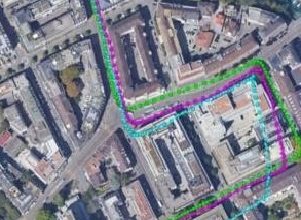Connecting Service Operations with Telematics
Author: John Cameron, General Manager, Trimble Field Service Management
Telematics has long been regarded as being the basis for tracking the location of vehicles. However, telematics technology is advancing quickly and more and more organisations are looking to extend solutions to track their workforce and more importantly their assets. Telematics deployments are becoming much more cost-effective and the entire service workflow increasingly connected. Indeed, telematics today can share real-time information and connect mobile workers in the field with the back office, customers and equipment.
Businesses that invest in telematics driven connected workflows see many benefits; especially when combined with deeper analytics systems. One such benefit is switching the service model from a reactive, break-fix workflow to a preventative and, ultimately, predictive model. These advanced workflows require a tight connection from the asset to the service management system and telematics is often a good candidate for providing this connection.
Telematics powering service workflows
The advantages of moving to more advanced service models are significant. In many situations, the downtime of the asset poses a significant cost to the business. The ability to perform maintenance at more opportune times i.e. when the equipment is not needed operationally can have dramatic results. Consider, for example, construction equipment. Construction jobs run on tight margins and have a lot of cross dependencies between tasks. A broken piece of equipment can bring the entire project to a halt; impacting much more than the task it was designed to perform.
Connecting assets in a service workflow requires more than just reading data from the asset; it requires a rethinking of the service workflow and often of the business model. In a break-fix model; most service requests originate from the customer directly and there is a tight link between the problem and the resolution. In more advanced service models, such as preventative and predictive, these links are less apparent. Service providers need to be able to communicate and share data with their customers in new ways to ensure that each party understands what is driving the maintenance activities. This is often a much more difficult task than implementing the technology and needs to be considered carefully.
As an example, many assets and equipment today are equipped with sensors, connected to cloud software, that can monitor telematics data. This data can include machine operating hours, the state of the motorised parts and health information such as faults and diagnostic codes. Any unexpected behavior is visible remotely to the service provider, including its exact location. The equipment sensors can automatically trigger a service call when it needs something repaired or is due for maintenance.
There are still many advantages to deploying telematics to connect assets even with break-fix workflows. Understanding the condition of the asset before deploying a technician will improve first time fix rates; which will drive higher customer satisfaction. This is often the first step in changing the service model.
Connecting Assets from Multiple Suppliers
A challenge many service organisations need to consider is how to connect to assets from multiple suppliers. Each supplier often has their own proprietary systems that have different data formats which make integration difficult and time consuming.
Some industries are starting to incorporate data standards that help alleviate much of the effort required to establish connections to the assets. One example is the Association of Equipment Management Professionals (AEMP). A standard protocol was recently adopted that allows for fault code and other information to be shared in a standard way. This standardisation helps create more interoperability in the market and will surely be a boost to connected workflows in this market.
The future of Telematics
The future for telematics is certainly bright. With businesses increasingly looking toextend their telematics capabilities to track their vehicles, workforce and assets, investing in telematics driven connected workflows, combined with deeper analytics systems, is certainly desirable. We will see businesses switching the service model from a reactive, break-fix workflow to a preventative and, ultimately, predictive model. These advanced workflows require a tight connection from the asset to the service management system and telematics is integral to providing this connection.
______________________________________________________________________
About Author:
John Cameron is general manager of Trimble Field Service Management (FSM), where he is responsible for worldwide operations and development. Prior to joining FSM, Mr. Cameron was general manager of Trimble’s Spectra Precision Division and before that general manager of Pacific Crest Corp., a company he co-founded in 1994 that was acquired by Trimble in 2005. Mr. Cameron holds a bachelor’s degree with highest honors in mechanical engineering from UC-Berkeley and a master’s degree in mechanical engineering from Stanford University.



